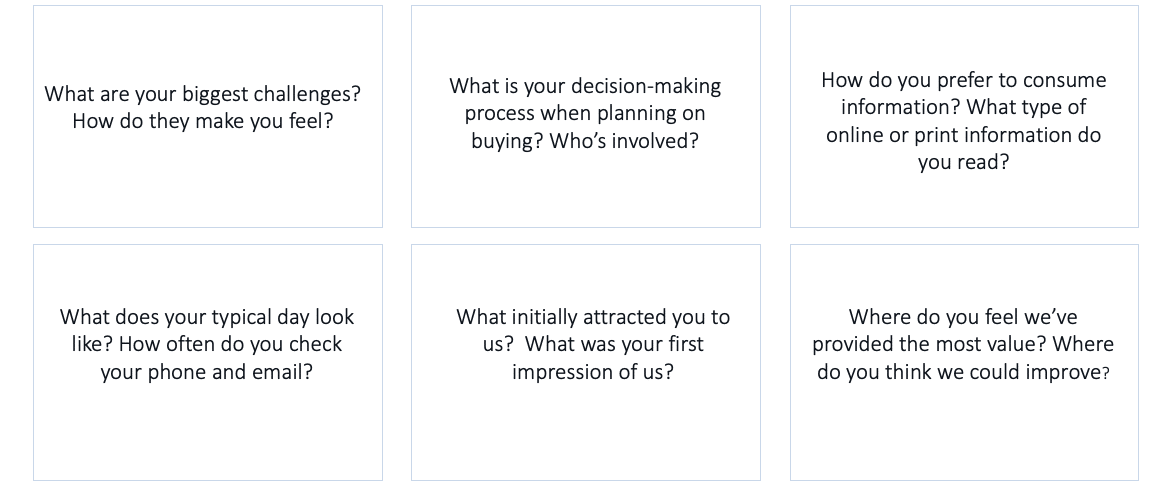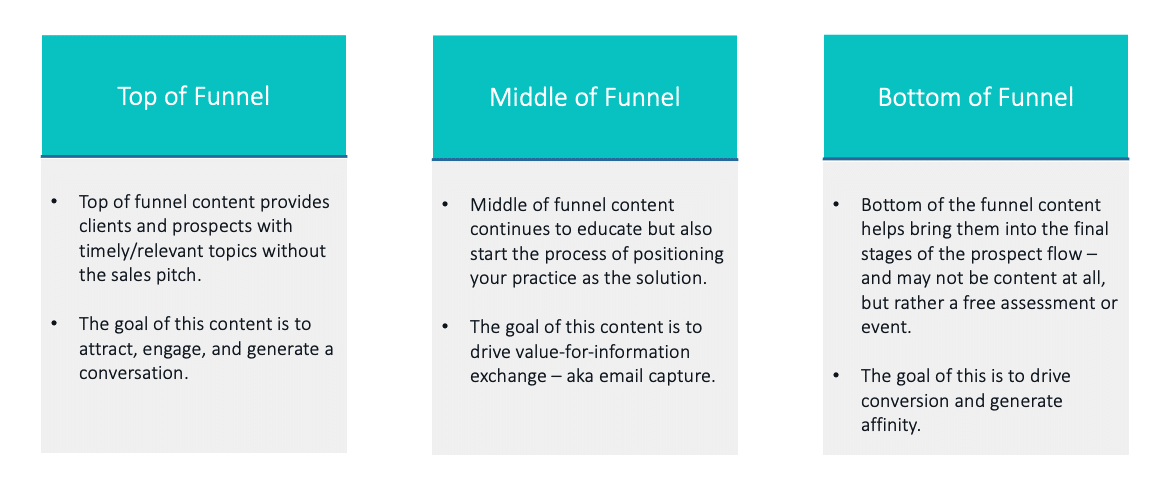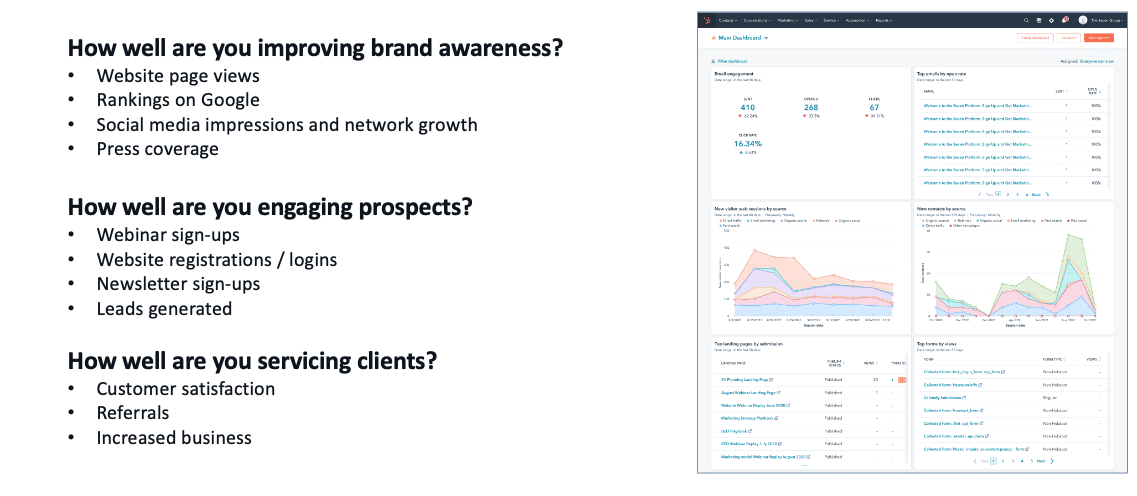Interested in learning more about the Advisor I/O platform?
Leave us your info and we'll send you more details
Blog Detail
10 Biggest Questions We Get from Financial Advisors Regarding Marketing
by Advisor I/O
Fresh off a conference last week where we had the chance to present in front of 60+ financial advisors on how to digitize your practice further. If there’s one thing the last 18 months has taught us, it’s that digital communications continue to grow and innovate, will be at the core of growing your business in the future.
Marketing is driving a ton of questions from advisors, in part because the advisor marketing muscle just isn’t there. Advisors haven’t needed to do a ton of it over the years. With leads primarily driven by referrals and word of mouth, proactive marketing has been an afterthought.
Digital is fragmenting all of this. It used to be that someone would learn about you from one channel, take your word for it, and when you deliver on the promises made, trust is established.
But that’s changed in the digital world.
The power is in the consumer’s hands now. They can research you in more places, consume your personality in more forms, interact with you on different platforms. Not only do they expect you to deliver on the results, but they also expect you to be consistently reliable, transparent, proactive, available, authentic.
That’s why this latest session we hosted was the longest Q&A we’ve ever had in any of these presentations.
So, we wanted to capture the top 10 questions we know you are asking and share our answers.
1. When Defining My Audience, What’s the Best Way to Go About it?

This should be the first step in any marketing strategy. Without this, you will spin your wheels for months. In our view, it’s not about niching down; it’s more about being very clear and defined about who you want to work with and what you want to be known for.
That resonates with most advisors. The questions – How do you do it?
We recommend going out to 10-20 of your clients, those that closely fit your ideal customer, and running them through a series of questions. The goal of the questions is to help you understand what they care about, what motivates decisions, where they spend their time, and how they consume information. These answers shape your marketing strategy and end the guessing game.
2. How Do I Figure Out What Kind of Content I Should be Creating?

There are three types of content you can create – top of funnel, mid-funnel, bottom-funnel. As shown above, each has a purpose. The top of funnel content is your blogs, podcast, videos. Mid-funnel is your newsletters, webinars, eBooks, guides. The bottom funnel is your nurture campaigns, win-back outreach, and referral campaigns. You’ll need content for each stage – items you can push out consistently on a cadence.
Determining what content to create specifically (i.e., launch a video series) comes down to your audience and what you’re good at. If your audience is sophisticated, you can stay away from 101, 102 educational content. If they fall in a specific industry, say startup tech executives, you can lean into RSU, Stock Options, and other content. If they like to consume video, then you know you should be doing more video. Then you pair this with what you want to do and eliminate everything else. If you don’t like doing video, there’s no need to be wasting your time with video.
You want your creation to be enjoyable.
3. Everyone is Telling Me to Do More Video, Is It Worth It?
With video, it comes down to what we noted above – does the group you’re going after consuming a lot of videos, and do you like to record video? If both answers are yes, you know to do more of it.
4. How Can I Make the Most Out of My Content for Every Single Piece?
The worst feeling when it comes to marketing is when you put a ton of effort into something, only to use it once. We’re going to take the slice and dice model even further and use it to maximize content deployment.
First, create templates. This comes in the form of graphic templates and video templates. These are foundational templates you create in a platform like Canva or Camtasia where you can continue to create assets to promote the same piece.
- Graphic templates: 1-5 templates, could be a quote card, stat card, image/title card, etc.
- Video templates: a social-clip template that allows you to highlight clips of videos you create, whether a 2:20 video for Twitter or shrinking down a larger YouTube video.
5. How Should I Approach SEO, and Specifically Local SEO?
SEO seems to be the one tried and true marketing strategy that never goes out of style, at least for now. We’ve built out multiple articles on SEO and what you can do about it – but optimizing your site for Google comes down to four things: Site structure, site speed, site content, and off-site links.
Site structure – ensure your site is organized effectively – the most important things are the easiest to find, and a visitor can jump from page to page with minimal effort. Your navigation should be clean with 5-6 navigation items, and people should be able to contact you easily via CTAs, exit pop-ups, and site flyouts.
Site speed – in a 5G world, it’s hard to think that site speed would be a thing, but it is. Site speed can crush your SEO results and leave visitors frustrated. What weighs down a site? It could be multiple things from unnecessary code, heavy images, big videos, or a lot of animation. Reduce clutter, keep your experience light.
Site content – without new content, it will be hard to find and follow what you’re doing – not only from a user standpoint but from Google’s purview. Every week, new, well-researched content allows you to stay top of mind with your audience and show Google you’re putting out the right things at the right time.
Also, ensure your Google My Business page is setup properly. If you want to get technical, you can add local schemas to your site code.
6. When it Comes to Social Media, Do I Need to Be On Every Channel?
The short answer is no. The long answer is no. This idea you must be on every channel is completely out of date if it was ever relevant. Live where your audience lives. This could mean you’re spending time on Facebook via paid ads and groups. This could mean you’re doubling down on LinkedIn. It’s all channel dependent.
- Twitter: Great for specific niches, industry sector focuses, market followers, tech
- Facebook: Great for pre-retirees, parents with kids going to college, interest-niches
- LinkedIn: Great for business executives, entrepreneurs, tech execs
- Instagram: Great for millennials, younger employees, interest-niches
- Google Ads: Great for local search (if you have a big budget) and topical niches.
7. Is Paid Advertising Worth It?
Yes and no. The major misconception around paid ads is that if you turn them on, leads will flow in. This is a terrible marketing industry fake-out and one we recommend staying away from. Ads can be an excellent way to generate awareness for your brand and drive people deeper into your mid-funnel content (i.e., webinars, eBooks). However, you need to build up your audience on Facebook and cast big nets to build sub-audiences off those who engage with you.
Campaign success factors: Targeting, Topic, Timeliness, Creative
8. How Should I Balance Creating My Own Content vs. Sourcing From a Third Party?
It’s always a balance. With all ourAdvisor I/O members, we tell them that they should be creating at least 50% of their own content, even if they’re supplementing it with blog content. The key is diversification in content – so if you’re taking 3rd party blog content, pairing that with an original video series so your audience can interact with you in different ways.
9. How Do I Measure Marketing?
Marketing should 100% have an ROI, but that ROI takes time to develop. So, what do you measure if ROI isn’t immediately evident? You need to understand if you have any momentum when it comes to your marketing – this could be in the form of more awareness, more engagement, or more known contacts. We break down some metrics you could measure below.

10. What Tools are Best to Use When it Comes to Marketing?
Marketing tools spread far and wide and choosing the right ones can be paralysis by analysis. We put together the checklist for you to use in a digital world, from our platform to webinars.
The Bottom Line
Marketing is always a hot topic with financial advisors, and there are always a lot of questions around how to approach it. Especially since COVID. Put the right strategy in place, put the right players around you, and onboard the right tools – you’ll be cooking in no time.
Learn more about our platform.




